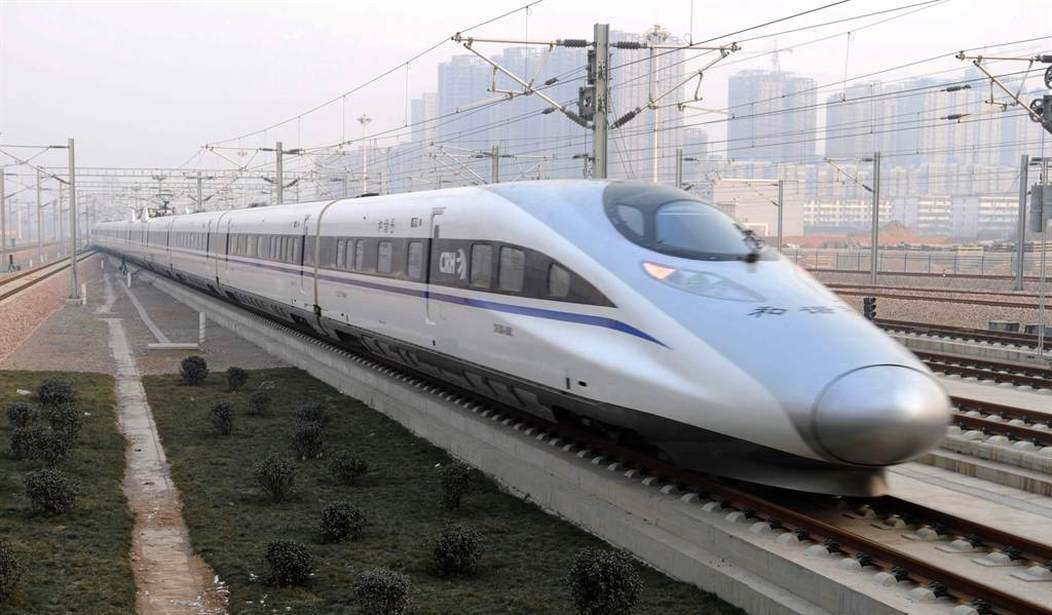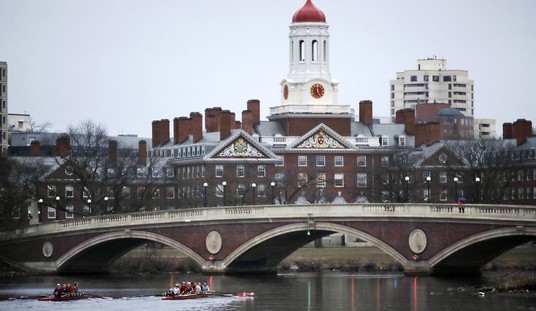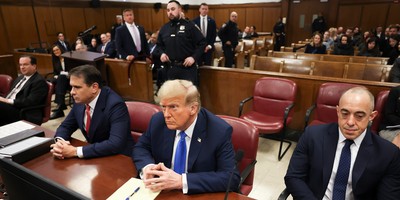Editor's note: This feature originally appeared in the June issue of Townhall Magazine.
Tucked between E. California Avenue and Edison Highway in a dusty corner of Bakersfield, California, sits the First Free Will Baptist Church and Bethel Christian School. Since 1949, the church and, subsequently, the school, have served the community of East Bakersfield in a mission of Christian outreach and quality, affordable education.
While Bakersfield oil fields have helped the city escape much of the chronic unemployment that afflicts most of the San Joaquin Valley, the eastern portion of the town has long been less than affluent. Most of the surrounding residents are among low-income and lower-middle- income households, and the streets are lined with modest homes and small, family-owned businesses.
“In 1964 the membership of the church elected my grandfather, C.E. Hames, as the pastor,” Michael Kennedy, principal of Bethel Christian School, tells Townhall. “Under his leadership the church purchased some 22 lots and built five new buildings, including the existing educational facility. With the goal of training Christian youth to go into all walks of life, he then established Bethel Christian School in 1980, and he served as the first school principal.”
Leaders and stakeholders of the church/school facility see their ministry as a beacon of hope in an otherwise rough part of town. While other private schools in the greater Bakers- field area cost anywhere between $4,000—$12,000 per year in tuition, Bethel Christian School strives to meet the needs of the most vulnerable youth—providing an accredited Christian education at half the cost.
Yet, the continued success of the congregation’s ministry is currently in jeopardy.
The facility is situated between the two proposed routes of California’s High Speed Rail project, set to cut through the city of Bakersfield to connect California’s Northern regions of San Francisco and Sacramento to its Southern metropolises of Los Angeles and San Diego.
“The loss of this ministry facility would be unfortunate,” says Kennedy, a fourth-generation church member. “But, as we have noted in correspondence with the High Speed Rail Authority, all we desire is full mitigation or compensation, so this ministry can continue to help the local community.”
PROPOSITION 1A
For decades, progressive politicians pushed the idea of building a high speed rail system that could connect Northern and Southern California. In the early 1980s during his first stretch as governor, Jerry Brown signed the first high speed rail legislation into law. That bill authorized a study into new technology that he envisioned would thrust California and the United States into the future of transportation.
Recommended
But when Brown left office in 1982, his passion for high speed rail left with him. A few measures made it to the state ballot in subsequent years, but nothing passed until 2008. With just over 52 percent of the vote, a Democratic wave in an already deep blue stated passed Proposition 1A, the Safe, Reliable, High-Speed Passenger Train Bond Act for the 21st century.
The measure authorized the sale of $9.95 billion in general obligation bonds that would be dedicated to the California High Speed Rail Authority. California voters were promised the train would cost no more than $40 billion, with the final $30 billion anticipated to come from federal funds and other yet to be determined sources.
And therein lay a critical problem: from the very beginning HSRA’s bank coffers have been nearly empty.
YO-YO COST ESTIMATES
In 2011, the Authority released a “more realistic” cost estimate for the bullet train that saw the cost more than double to $98 billion. And the completion date was pushed back more than a decade, to 2033. The new strategy, which included a $16 billion contingency reserve, caused a public uproar project leaders did not expect.
In an attempt to mollify the outrage, the Authority released a third, scaled-down plan that offered a “blended system” of high speed rail at the bargain basement price of just $68 billion.
The most detrimental criticism came from Quentin Kopp, former chairman of the HSRA and long-time proponent of high speed rail.
Kopp told the Los Angeles Times, “I want to kill this iteration of [high speed rail] because it betrays the representations to the voters in November 2008.”
He even submitted a declaration against the HSRA, which later became court record in a lawsuit that Kennedy and other local petitioners filed concerning the validation of the bonds the state would sell to fund its end of the project. It read, in part:
“In my opinion, the HSR project, as it has evolved in the 2012 Authority’s Business Plan, is no longer a genuine HSR system, as covenanted to California voters and the Legislature. ... Instead, it has been distorted in a way directly contrary to the high speed rail plan the Authority attempted to implement while I was Chairman.”
One major drawback to the HSRA’s revised plan was the increased travel times between San Francisco and Los Angeles. The Los Angeles Times reported that while the HSRA could theoretically demonstrate that the train could make the trip from San Francisco to Los Angeles in two hours and 40 minutes, scheduled service stops would slow overall trip times.
“The design, in order to try and hold down very, very high costs, has created blended systems in Northern and Southern California which essentially downgrade high speed rail to ‘fast’ rail,” says state Asm. Jim Patterson (R-Fresno), whose district lies within the initial operating segment that runs through California’s Central Valley. “The problem with all of that design and all of that effort is that it makes it impossible for the train to deliver on its promise of two hours and 40 minutes.”
A JUDICIAL BLOW
The HSRA was then dealt a serious setback in 2013, when Sacramento Superior Court Judge Michael Kenny ruled that the HSRA failed to comply with the requirements and safeguards set forth in Prop 1A.
In two separate rulings, Kenny determined that the HSRA’s revised funding plan was illegal because it did not properly identify full funding for the project or complete the necessary environmental impact reports for the first leg of construction.
He also ruled that the state could not sell Prop 1A bonds until the HSRA had a funding plan for the entire $68 billion project, effectively bankrupting the HSRA until more funds could be identified.
HAND IN THE COOKIE JAR
This caused Gov. Brown to scramble for additional sources of money. In his most recent budget proposal, Brown basically stole $250 million from California’s cap-and-trade program and earmarked the money for HSR. State environmental activists did not appreciate the maneuver.
The California Legislature passed, and Brown signed, a cap- and-trade bill into law in 2012. Under the law, cap-and-trade funds, which are basically just taxes on most economic activity, were to be reinvested in “clean technologies.” With high speed rail unlikely to operate by the 2022 cap-and-trade deadline and new analysis that questioned just how effective high speed rail would be in reducing GHG emissions, environmentalists chided Brown for what they saw as an obstacle to their overall reduction goal.
Democrats in the Legislature haven’t committed to Brown’s plan either.
State Senate Transportation and Housing Committee Chairman Mark DeSaulnier (D-Concord) warned the HSRA in March that the Legislature might not have the votes to pass Brown’s contentious budget request.
THE POWER OF FEAR
Patterson says it’s the Legislature’s responsibility to hold the HSRA accountable, but that political bullying keeps Democrats from killing the project. His bill, A.B. 1501, which would have prevented the continued use of federal dollars until the state funds were immediately available, was voted down in committee in March.
“I think it’s about power and I think it’s about fear. When it comes right down to it, they hold the power. The leaders of the Democrats in the state of California are using fear tactics to keep the troops in line,” Patterson explains.
“Every time we spend a dollar of federal money, we are, without legislative oversight, without the approval of the people, encumbering the state of California for that match,” he continues. “And if the judge were to rule that the 1A funds were not available, the General Fund would be obligated to pick all that up.”
Patterson realizes that it’s the same old line, “which is to say we’ll spend a lot of money, we’ll hire a lot of people, and you’ll be out of poverty. When the truth of the matter is that it sucks away other quality middle-class and upper-middle-class construction jobs that are much deeper, much wider, much more available to people other than the specialized kind of construction and the specialized kind of jobs that a high speed rail project creates.”
MOUNTING FRUSTRATION
And it’s not just local citizens who are trying to halt high speed rail.
One of the project’s most vocal critics, Rep. Jeff Denham (R-CA), has spent much of his time in Congress working to hold the HSRA accountable from a federal level. As chairman of the Subcommittee on Railroads, Pipelines, and Hazardous Materials, Denham introduced legislation (the Responsible Rail and Deterring Deficiency Act and a transportation appropriations amendment) that would suspend federal funds for HSRA until enough non- federal funds were made available.
“People are frustrated. You had stimulus dollars that were dedicated to a shovel- ready project, and five-years later, there still is not one shovel that’s been put into the ground,” Denham says. “The biggest challenge is that most people think it will never get built. Right now, by their current numbers, they have about a $15 billion dollar deficit (for the initial 300 miles of track) that they would need to come up with. The president is not proposing that. The governor is not proposing that; but yet, they are going to continue to move forward and spend dollars that we don’t have.”
Since its inception, the Obama administration championed California’s high speed rail project, allocating a total of $3.5 billion in federal stimulus dollars. Pursuant to federal law, the use of these funds must come with a dollar-for-dollar state match. Hundreds of millions in federal money has already been spent, despite no initial construction, with the July 1 extended match deadline quickly approaching.
FARMERS FIGHT BACK
But severe funding and engineering challenges are just the tip of the iceberg. As a Central Valley almond farmer, Denham shares the concerns of many of his constituents who will be personally impacted by the rail’s proposed route.
“Agriculture is our number one industry, and this is going to zigzag across farmland down the Valley that will divide current farmers, most of which don’t want to sell their property,” he says. “Now, they are being threatened with eminent domain. So, farmland will go fallow. We’re going to see a lot of farmland lost, and it’s going to sit for several decades, as this project continues to limp along without funding.”
Yet, Denham’s aggressive stance to halt the project will only go so far. As long as power remains divided between the House and Senate, definitive action at the federal level seems unlikely; although, Denham thinks this could change.
“Certainly Democratic leadership is still moving forward on this, but we’re seeing more and more bipartisan support for taking this back to the ballot, or for killing the project altogether.”
REPEAL THE RAIL
So, what does the future of high speed rail look like for California?
“The people in my district, and I would say overwhelmingly across the Valley, would like to see this go back to the ballot,” Denham says. “They don’t feel like they’ve gotten what they were promised, and we’ve got real issues we have to consider. Water is probably our biggest infrastructure issue, as well as improving some of our current rail and highways that are falling apart.”
After several delayed start dates, HSRA officials are currently pushing full speed ahead on initial construction plans set to begin this summer from Madera to Fresno, despite the lack of funds, pending legal hurdles, and dismal public support.
The most recent opinion poll, conducted by Probolsky Research in January, found that 53.6 percent of California residents would vote to stop the project, if given the opportunity. Not only that, but more academics and independent researchers are providing new analysis which shows that the project, in its current form, will be unsustainable in both the construction and operational phases.
ANOTHER WAY
Despite what Democratic leadership purports, opponents aren’t completely against upgrading rail, but support alternatives that are more feasible than the current billion-dollar debacle on the table.
Denham sees several alternatives.
“The first and easiest would be to reconnect the rail that existed at one time, so that you could at least get from north to south through the Valley. We could also do high speed rail in certain corridors that are currently ready today. And I would say that a third option would be to actually move the right of way either along Highway 5, which was originally proposed, or along existing rights of way. We’ve got old rail in California that has been abandoned that could be picked up by the rail authority.
“That’s how it’s being done in Texas. That’s how it’s being done in Florida. They will be the first two states to get it done, and they are both doing it with private dollars.”
Back in Bakersfield, Kennedy also thinks California’s cur- rent rail system could be improved without the implementation of a project that threatens more than half a century of his family’s legacy.
“I’m not anti-rail at all,” Kennedy contends. “I believe a train connecting areas up near San Fran or Sacramento all the way down to Los Angeles or San Diego is a great idea. But why don’t we concentrate on what the need is? We have a great Amtrak in place. It’s well traveled, and it’s in a good position right now. Why not make progress stretching the Amtrak from its existing ending point in Bakersfield, and continuing that over the I-5 into L.A. and down into San Diego? Why not improve on what we have?”
FULL SPEED AHEAD
Despite all these setbacks, Brown is determined to see the bullet train begin construction. He sees it as his legacy project that will define the state for decades to come.
And define the state Brown’s bullet train will: as an ambitious and arrogant liberal failure.
The only real question now is how much damage Brown and the HSRA are allowed to do to the state’s finances before some court, or even the voters, put a stop to the insanity. •

























Join the conversation as a VIP Member